Ugly Diamond Bow Ties – Signs of Poorly Cut Stones

Notice the bowties in the different fancy shape diamonds above?
Ideally, a diamond should reflect every ray of light that enters through its table facet back through it. However, not every stone is cut perfectly and when we speak of diamonds with a poor make, we usually think of light leakage through the sides or the bottom of the stone.
In the case of fancy cut diamonds like the oval, marquise or pear, another type of cut imperfection can appear. It is called the bow tie and it looks like what its name implies.
In this write up, you are going to find out what a diamond bow-tie is and what are the things to look out for when buying a fancy cut diamond. Let’s dive in…
So, What Exactly is a Diamond Bow Tie?
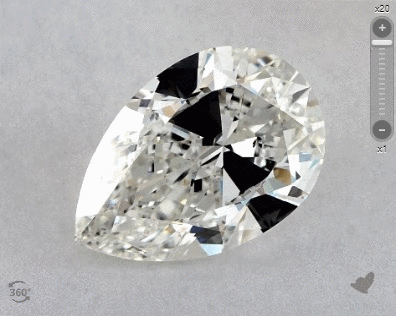
This pear cut diamond spots a very significant bowtie across its body.
A diamond bow-tie is a darkened area that runs across the width of the diamond’s body and the phenomenon resembles a man’s bowtie.
The degree of the bow tie effect has a direct relationship with one of the most important diamond characteristic – cut. When there are facets that do not reflect light properly regardless of the direction you turn or tilt the diamond, this phenomenon can manifest.
Unlike other common cut related problems, the bow tie effect is not caused by light leakage. Instead, it is created due to light obstruction when you are viewing the stone.
I know this may sound strange and you might be wondering why the process of viewing a diamond can be responsible for creating the bowtie.
You see, when an observer looks at a diamond, light rays traveling to the stone are shielded by the human head. This obstruction creates the dark looking shadows that get reflected within the stone.
No Light In = No Light Out
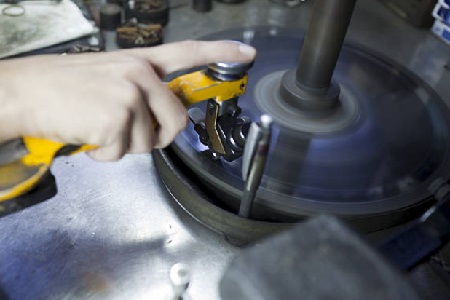
While it is possible for cutters to eliminate and lessen the intensity of bow ties, it isn’t as straightforward as you think it is. Basically, a cutter cannot just say “I am going to cut here or there, because I do not want a bow tie in this stone”.
The entire process is a lot more delicate than that as it is determined by a whole range of angles.
First and foremost, the skill and experience of the cutter play a large role in this aspect. On top of that, when cutters are working with the affected shapes (pears, ovals, marquises and hearts), they are also faced with other considerations and constraints for profitability.
For instance, it may not be economically viable for them to polish a diamond at the expense of losing too much weight from the rough. Also, if there is an unsightly inclusion in a particular area of the rough stone, the cutter may choose to take corrective actions to remove it at the expense of ideal facet proportions.
In order to minimize the bowtie effect, the cutter has to carefully design the stone and take into account every possible angle that might yield unwanted results.
And because there is always a priority to maximize profitability instead of polishing away additional rough material for a well-proportioned diamond, the market is filled with plenty of mediocrely cut diamonds with different types of appearances.
Diamond Bow-Ties Aren’t Necessarily Bad
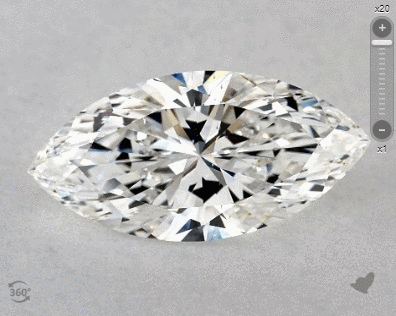
This marquise is well cut for light performance and the bowtie adds a dimension of scintillation.
Fancy cut diamonds like marquise and ovals will typically have some degree of a bow-tie. Those without a bow-tie usually lack brightness and tend to look dull. In fact, a slight bowtie can actually give fancy shaped diamonds a sexy appeal and define the diamond’s character.
What you want to avoid are diamonds with bowties that are so prominent/wide that they black out a huge area on the stone. This negatively affects the diamond’s appearance and I will show you some real-life examples of such stones in a moment.
On this note, I also want to offer you a word of caution here. I have had experiences with jewelers who had the cheek to tell me diamonds with dark bowties are actually more appealing and dark bowties are inevitable in fancies.
It’s not true. Very often, unethical jewelers are willing to say anything to market their wares and attempt to offload poorly cut diamonds onto unsuspecting consumers.
How to Shop For Fancy Cuts Without a Problematic Bowtie?
The bow tie effect is a tricky property to deal with because the grading report makes no mention of it. There isn’t any indication of whether a diamond displays a “small bow tie” or “big bow tie”.
So, if you are going to make a diamond purchase based solely on a grading report, you might easily end up with a diamond with an unwanted bowtie effect and an inferior cut.
If your jeweler isn’t able to provide you with any visual data of the diamond and wants you to commit to a purchase (e.g. asking you to pay a deposit to view a diamond), you have to be extremely careful and walk away.
Think about it, if the vendor had never seen the diamonds themselves, how would you expect them to tell you if there are any potential problems with the diamond?
So, what’s the best solution? Your own eyes!
And that’s the reason why I recommend shopping for fancy shape diamonds at vendors like James Allen and Blue Nile. Their video listings enable you to accurately assess the degree of bow-ties via visual inspection.
The Video Technology Reveals Everything!
Once you head over to James Allen, you’ll find out for yourself why it is so much easier to shop for a diamond there.
Check out these diamonds with their respective photographs that depict desirable and undesirable bow-tie effects. You will see why I love the use of images and videos as they can explain everything far better than what words can do.
Do click on the images and interact with the video listings for yourself!
Avoid diamonds with appearances like this!
These are the types of diamonds I would recommend buying.
The first thing you can do is to use the search filter tool to narrow down your choices.
Next, you can inspect the diamonds one at a time by viewing the videos at your own leisure and away from a sales environment. You could shortlist the diamonds you like and then cherry pick the best one based on your preferences.
It’s that simple. And if you need any help, you can always approach their support staff via 24/7 live chat to get answers.
Related Articles
Leave A Comment

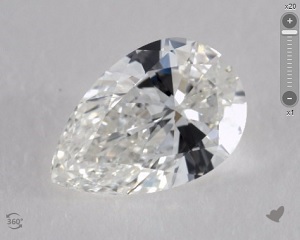
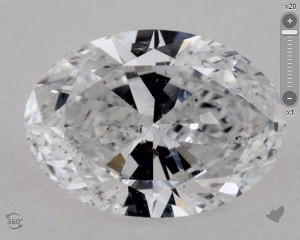
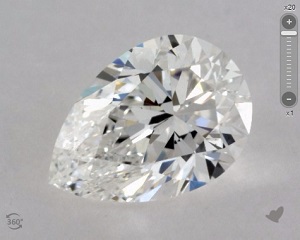
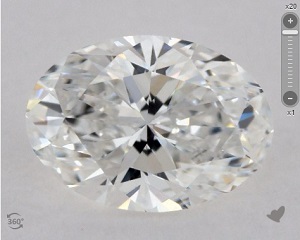
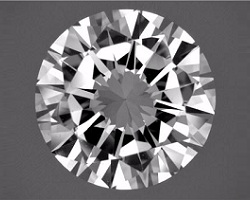


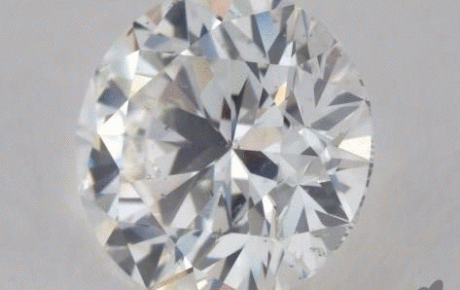









7 Comments
Here are a couple more examples of oval diamonds that showcase the difference between well cut and terribly cut quality.
Are the presence of bow-ties in pear diamonds contemplated in GIA’s diamond grading (as part of their comments or remarks)? Would a setting affect a bowtie in the diamond? What I’m asking here is whether the setting can create a darker bow tie or enhance the appearance of the bowtie by manipulating the way the stone is mounted.
There’s no such remarks in the lab report. The presence or absence of bow ties can only be determined via videos or photographs. As for your setting question, that’s a really good one and most people forget that the ring is made up of two components: diamond and setting. Certain types of settings like the bezel style and having too much metal beneath the diamond can cause an intensified bow-tie effect. I would generally recommend more “airy” settings and have made a list of the best pear shaped diamond ring settings here.
Thank you for the article. I’m having so much frustration finding a nice looking oval from my local jeweler here in LA. The ones they showed me didn’t look great and had noticeable bowties. They offered to call in some more stones on the condition of having a deposit placed with them. Is it even possible to buy an oval with no bowties at all?
The problem with local stores is their lack of inventory and extremely small selections. You are expected to make a purchase on what they have in store instead of what you want. Calling the diamond in blindly is a bad mistake. Head over to the recommended vendors I listed here and you will have a much easier time finding a diamond. Plus, it’s completely risk-free.
Now, bow ties may not be ideal but they are not all bad either. With fancy shapes, it takes more work and research to find a stone you will be happy with.
You need to keep in mind that a bow tie effect of some degree will almost certainly appear in fancy cuts like ovals, marquises or pears. In fact, fancy cut diamonds without any traces of bow-ties are usually cut to dismal proportions and have issues with brilliance.
What you should do is to choose one where the bowtie doesn’t stand out like a sore thumb and blends in well with the body of the stone instead.
I have an oval cut diamond that I inherited from my grandmother and it has a big dark bowtie. Is it possible to treat the bowtie or are there any methods to reduce the effect?
The only way to “treat” a bowtie is to repolish or recut the diamond. This would result in quite a substantial cost especially when it comes to manpower. You need skilled workers who know what they are doing and this can cost anywhere between $300-$400 for a repolishing depending on the complexity of the job. If you have to factor in your time to find someone willing to do it, take care of shipping and transportation cost, it will quickly add up.
Unless the diamond’s value is somewhat substantial, it doesn’t make sense to do it from a practical point of view. If you are doing it for sentimental reasons, then be prepared to get your work cut out for you. I would expect a weight loss of around 5-10% to get things “fixed”.